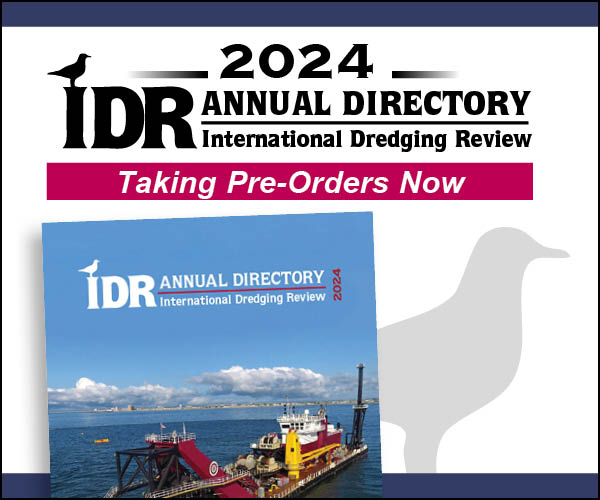Corps of Engineers Dredge Maintains Important Alaskan Shipping Channel


The Essayons dragarm operates with a semiautomatic handling system for 24 hour a day operation.

The fine consistent sand was well suited to the hopper dredge. where the weir system dewatered most of the sediment before its short trip to the disposal site.
In June the Corps of Engineers Alaska District dredged the Cook Inlet Navigation Channel for the first time since its construction in 1999-2000 for safe ship passage between Knik Arm Shoal and the Port of Anchorage. This work was done on the channel after sudden shoaling increased in recent years reducing depths and affecting navigation.
Julie Anderson project manager USACE Alaska District said no one factor contributed to the recent sediment accumulation. There are many shoals in the area she said namely Knik Arm Shoal which could have shifted or it could be movement from other shoals in the area. “All we can do is monitor it and keep surveying” she said. The more data the Corps has the better it can predict the future.
The Corps owned and operated hopper dredge Essayons removed most of the 2.8 million cubic yards. Manson Construction Company was performing maintenance dredging at the Port of Anchorage and did some dredging on the project when it was available.
Essayons has operated for the Portland District since 1983.
Anderson said there’s a limited number of hopper dredges available in the area. The other West Coast districts put some of their projects out to bid so the Essayons could dredge Cook Inlet.
The dragarm system can dredge at a depth of 35 to 80 feet and the system monitors production so the crew can maintain efficient operations 24 hours a day.
At Cook Inlet the crew surpassed expectations for cubic yardage in this year’s maintenance dredging. The hydraulic suction dredging removed sediment in the existing channel to a depth of 43 feet and a width of 1100 feet at a length of 11000 feet. The dewatered sediment went to a Fire Island disposal site.
Anderson said having the disposal site so close to the channel helped production and shortened cycle times. She also said the sand sediment was well matched to the equipment. With minimal breakdowns and minimal delays the dredge removed 2.8 million cubic yards of sand in 35 days.
For 12 years the channel maintained traffic and just last year faced safety hazards with low areas. A condition survey found shoal material 10 feet above an acceptable depth for safety which cut the channel usability by half and required shippers and their pilots to take special measures to avoid running aground while moving through the channel.
According to a port fact sheet an estimated 90 percent of the merchandise goods for 85 percent of Alaska’s populated areas are off-loaded at the docks in Anchorage. This includes goods for more than 200 villages and rural towns. About 1.4 million gallons of fuel flow to western Alaska annually through the port and it serves as a crucial hub for supplying aircraft and vehicles in South central with petroleum products as well. It is the only Coast Guard marked route for all cargo and fuel ships supplying the Port of Anchorage.
This year’s $5 million project restored safe and efficient navigation in the channel as a big first step in the long-term maintenance of the channel. Anderson said the Corps has asked for another two million cubic yards to be dredged in FY2014 and the project needs some monitoring before additional dredging projects.
Although the project site is only six miles from the Port of Anchorage the remote site is a 20-minute boat ride and has issues with cell phone communication. Anderson said the area had late ice in the water which delayed dredging initially. “You’re really out there on your own”Anderson said. “It’s hard to see Anchorage and you’re responsible for all your own safety.”
The endangered beluga whales in the area could have shut down dredging if they had come within 165 feet but the whales are most active in August and September not spring and early summer.



